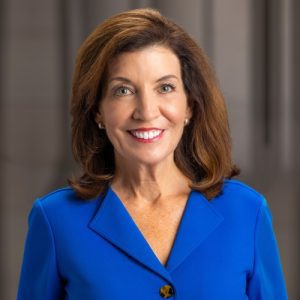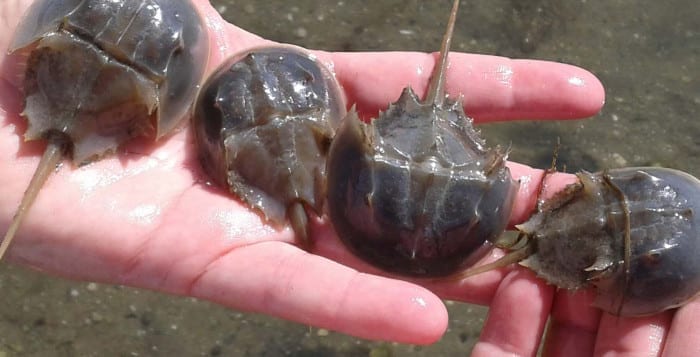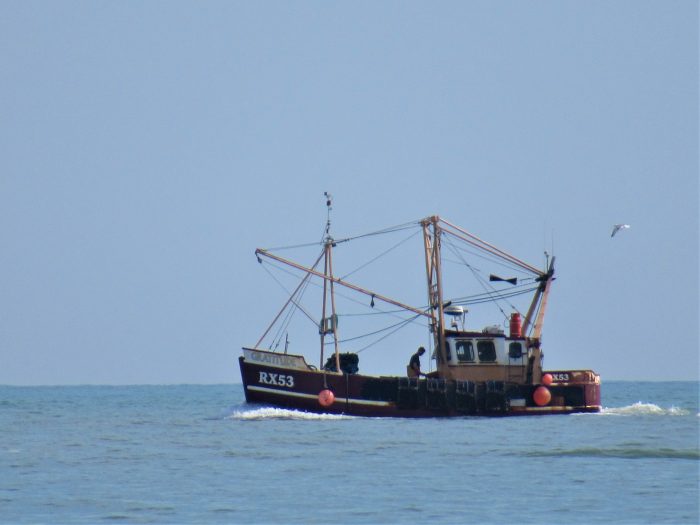Gov. Hochul says regulation authority should stay with DEC
By Mallie Jane Kim
New York’s horseshoe crabs remain available to use as bait, after Gov. Kathy Hochul (D-NY) vetoed a bill that would have prohibited the practice. Long Island environmental groups that had advocated for increased protections were not happy with the move.

“I’m angry and disappointed,” said George Hoffman, cofounder of the Setauket Harbor Task Force, which monitors water quality in area harbors and was one of about 60 organizations that signed on to a September letter urging Hochul to sign the bill.
“It will be hard to build enthusiasm among the environmental community for this governor,” Hoffman said.
Hochul’s Dec. 13 veto argued the species is already regulated by the New York Department of Environmental Conservation and the Atlantic States Marine Fisheries Commission (ASMFC), and said the bill could have “unintended consequences” on managing species like whelk and eel, which are harvested using horseshoe crabs as bait.
“While this bill is well intentioned,” she wrote in a letter to the state assembly, “the management of marine species is better left to the experts at DEC.”
She also expressed concern the bill could be detrimental to the commercial fishing industry and the biomedical field, which uses horseshoe crab blood in the development of vaccines.
Members of the commercial fishing industry were grateful for the reprieve.
“We’re thrilled that legislation didn’t take the place of science,” said Bonnie Brady, executive director of Montauk-based Long Island Commercial Fishing Association.
Brady questions the sufficiency of methodology and equipment used to count New York’s crab population for the ASMFC’s report, which rated the state’s stock of horseshoe crabs as “poor.” She laid out her concerns in a letter to Hochul earlier this month, arguing the species is already highly regulated and not overharvested.
“Fishermen’s lives and livelihoods depend on this,” Brady said. “Fishermen deserve the best science available — we aren’t doing anything that’s even close to on par with what other states are doing.”
Brady added that fishermen do not want to see the species depleted, and they will work within the regulations they are given.
Before its veto, the bill drew attention from legendary conservationist Jane Goodall, who urged Hochul to sign the bill to protect the ancient species, calling on their “shared sense of responsibility for the natural world.”
For her part, Hochul said she is directing DEC to evaluate whether additional measures could help protect the species, and she pointed to the agency’s current efforts to address concerns about overharvesting, including harvest prohibitions during the May and June spawning season. The agency also limits the annual horseshoe crab harvest in New York waters to 150,000, which is half the quota allowed by the ASMFC.
Environmental groups are not taking her assurance as consolation.
“Governor Hochul didn’t just drop the ball; she dropped the axe,” said Adrienne Esposito, executive director of Farmingdale-based Citizens Campaign for the Environment, in a statement. “It’s unacceptable to allow the continued antiquated practice of chopping up horseshoe crabs so they can be used as bait by fishermen.”
Esposito said her organization will keep advocating for stronger regulations to ensure long-term protection of the species.









